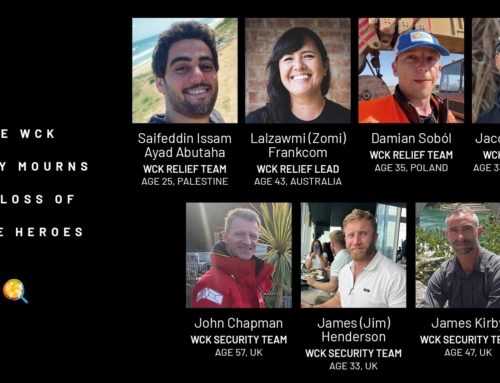
Close to 40,000 people live in this crowded, deteriorating camp.
By Nancy Ippolito, MECA Staff
In June, I travelled to Lebanon with my daughter, Lucia, to visit MECA’s projects in Beirut and the Bekaa Valley. Our first stop was Shatila refugee camp in Beirut, which was established after 1948 to provide temporary housing to Palestinian victims of the Nabka. Today close to 40,000 people live in this crowded, deteriorating camp. We wandered through the narrow alleyways, horrified by the maze of tangled electrical wires and water lines throughout the area. Residents told us stories of the many fires that occur as a result of this faulty wiring. Adults and children have even been electrocuted.
In Shatila we met Olfat Mahmoud, director of the Palestinian Women’s Humanitarian Organization (PWHO), MECA’s partner in Beirut. Talking about the child refugees from Syria, she told us, “our biggest challenge right now is the children’s loss of hope for the future. Kids see their parents sleeping much of the day since they’re not allowed to work in Lebanon, and the children can’t attend public schools. They’re angry and feel forgotten by the world, and many suffer from depression, fatigue, and many other health problems.” Olfat described the heart-breaking reality that children as young as nine, ten, and eleven talk about death and actually say they look forward to dying.
PWHO’s job is incredibly tough in the face of such despair. But they’re working hard in several arenas. MECA supports a project that provides academic instruction for children five to eleven years old who fled the violence in Syria. While their space is limited, the place is warm, welcoming, and family-centered. A social worker, teacher, and physical therapist are on staff to assist 40 children. They also offer parenting classes and recently opened a woman’s drop-in center with child care so that mothers of young children can get involved in activities. PWHO is hoping to revive a program aimed at empowering young girls called “Know Your Body,” in which teens are encouraged to ask questions about sexuality and learn about sexual harassment and self-defense. We were so impressed with the dedication of the staff. Many are volunteers, and the paid staff know their funding could be cut at any moment.
We left Beirut to visit Al-Jalil Children’s Center with projects in the Bekaa Valley, where conditions are truly appalling. Most newly-arrived refugees from Syria are not recognized by the UN, which means they’re not official residents of the camps, and they receive no UN support. Families are living in makeshift tents with tin roofs—places where people will freeze in the winter. Many encampments have only one toilet. We visited a cemetery where 50 new arrivals from Syria live among the dead just outside the camps.

We met with some of the girls who were excited to begin a basketball team, and witnessed lively summer activities
We met with some of the girls who were excited to begin a basketball team, and witnessed lively summer activities. We visited the rooms that serve as a school for refugees from Syria who can’t go to Lebanese schools. My daughter, who’s a preschool teacher, was excited to see some of the kids playing the same games children play in U.S. preschools.
Palestinians comprise the largest refugee population in the world. Those in Lebanon live in dire economic and social conditions. The more than one million new arrivals from Syria have stretched resources beyond limits and many point out the country is on the brink of a breaking point. As painful as it was to witness these conditions, we couldn’t help but admire the vibrancy of people’s responses to their circumstances. The teachers kept up a cheerful resolve, the classrooms were colorful and bursting with activities, families were planting beautiful gardens of flowers, vegetables, and trees among the tents and tin shacks, and women were busy preparing holiday meals for Eid.





